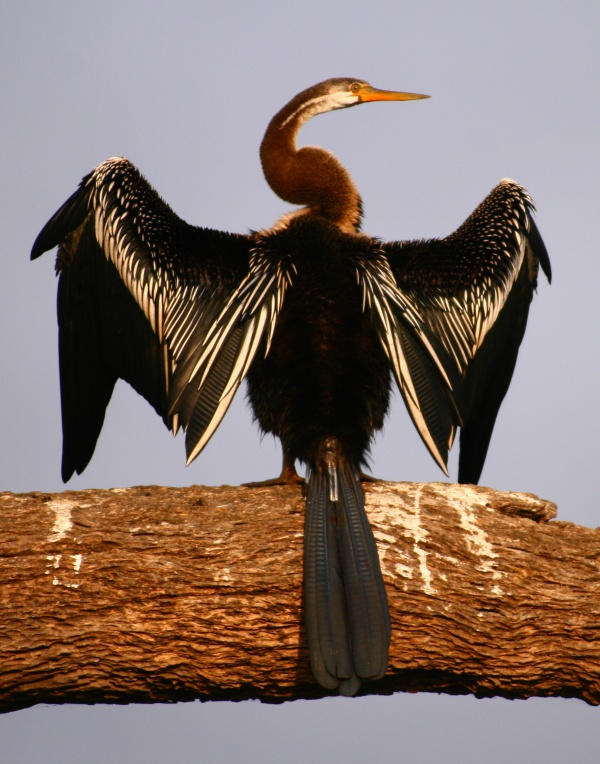Facts About Oriental darter
The Oriental darter, often referred to as the snakebird, is a captivating water bird native to tropical South Asia and Southeast Asia. These birds bear a strong resemblance to cormorants in their method of hunting fish. With their elongated, slender necks and pointed bills, they dive underwater, spear fish, and toss their prey into the air before swallowing it headfirst. When they swim, their bodies remain submerged, with only their snake-like necks visible above the water. Their feathers become waterlogged easily, so it is common to see these birds perched with their wings spread out to dry.
Regarding appearance, Oriental darters possess striking black plumage adorned with silver streaks on their wings. Their necks are brown, transitioning to black towards the back, featuring a striped pattern around the throat and eyes. The coloration of their bills, legs, and webbing varies with age and breeding status. In flight, their long necks, broad wings, and wedge-shaped tails make them easily recognizable. They construct their nests from sticks, often in trees near water, typically sharing these nesting grounds with herons.
Taxonomically, the Oriental darter belongs to the Anhingidae family and is closely related to American, African, and Australasian darters. These birds prefer to forage alone in freshwater lakes and streams, diving entirely underwater to hunt. In flight, they alternate between flapping and gliding and are capable of soaring on thermals. They usually lay three to six eggs, with both parents participating in incubation duties.
After the breeding season, Oriental darters undergo a synchronous molt, rendering them temporarily unable to fly. When threatened, they quickly dive underwater to evade danger. They feed their chicks through regurgitation and are typically silent, except for specific vocalizations at the nest. They also roost together in trees near water bodies.
Interestingly, in some regions, people have historically utilized darters for fishing by placing rings around their necks to prevent them from swallowing the fish they catch. Despite their adaptability, Oriental darters face threats from predators like Pallas's fish eagle and host various parasites.

 Vietnam
Vietnam